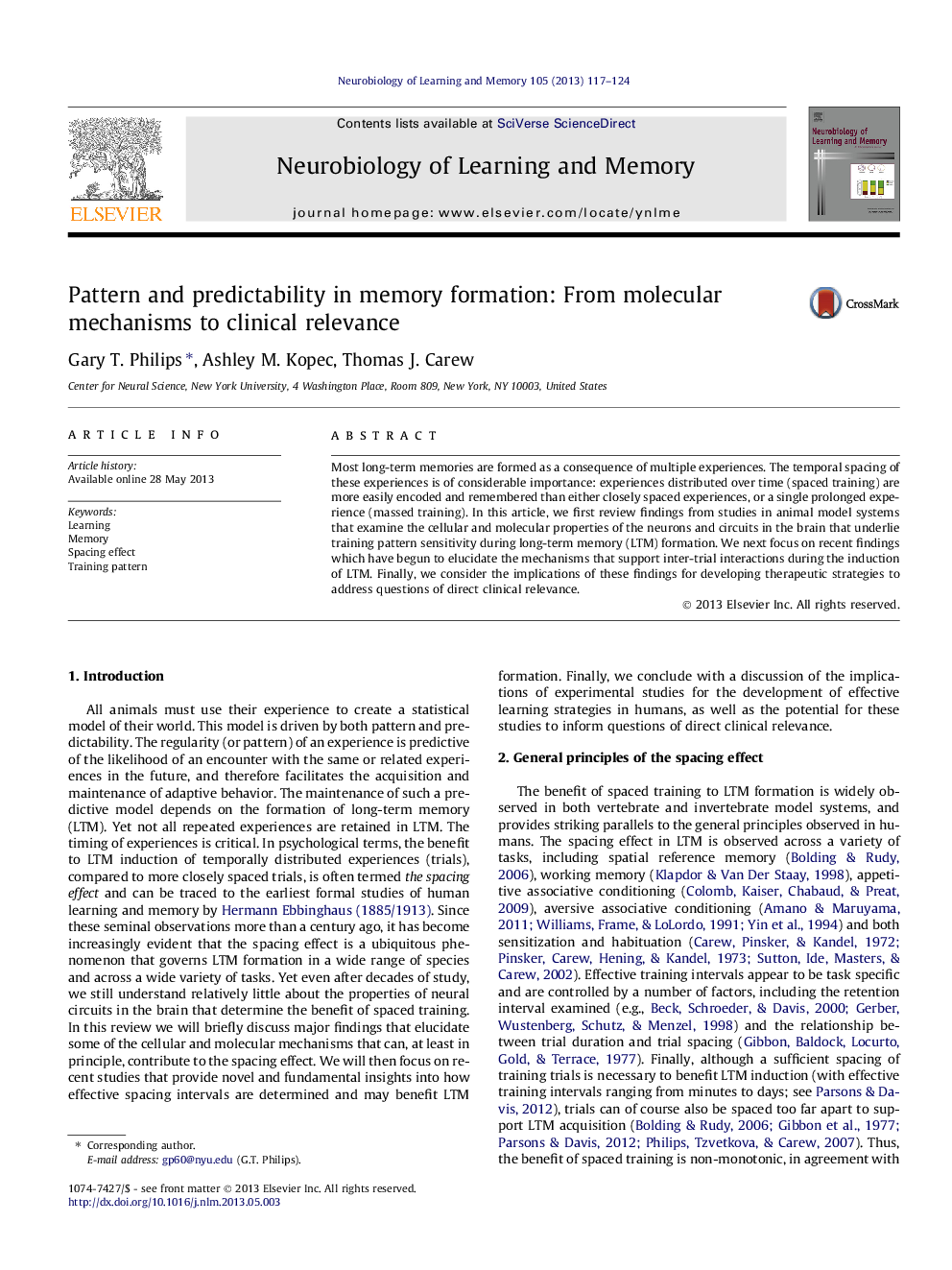| Article ID | Journal | Published Year | Pages | File Type |
|---|---|---|---|---|
| 7300491 | Neurobiology of Learning and Memory | 2013 | 8 Pages |
Abstract
Most long-term memories are formed as a consequence of multiple experiences. The temporal spacing of these experiences is of considerable importance: experiences distributed over time (spaced training) are more easily encoded and remembered than either closely spaced experiences, or a single prolonged experience (massed training). In this article, we first review findings from studies in animal model systems that examine the cellular and molecular properties of the neurons and circuits in the brain that underlie training pattern sensitivity during long-term memory (LTM) formation. We next focus on recent findings which have begun to elucidate the mechanisms that support inter-trial interactions during the induction of LTM. Finally, we consider the implications of these findings for developing therapeutic strategies to address questions of direct clinical relevance.
Keywords
Related Topics
Life Sciences
Neuroscience
Behavioral Neuroscience
Authors
Gary T. Philips, Ashley M. Kopec, Thomas J. Carew,
